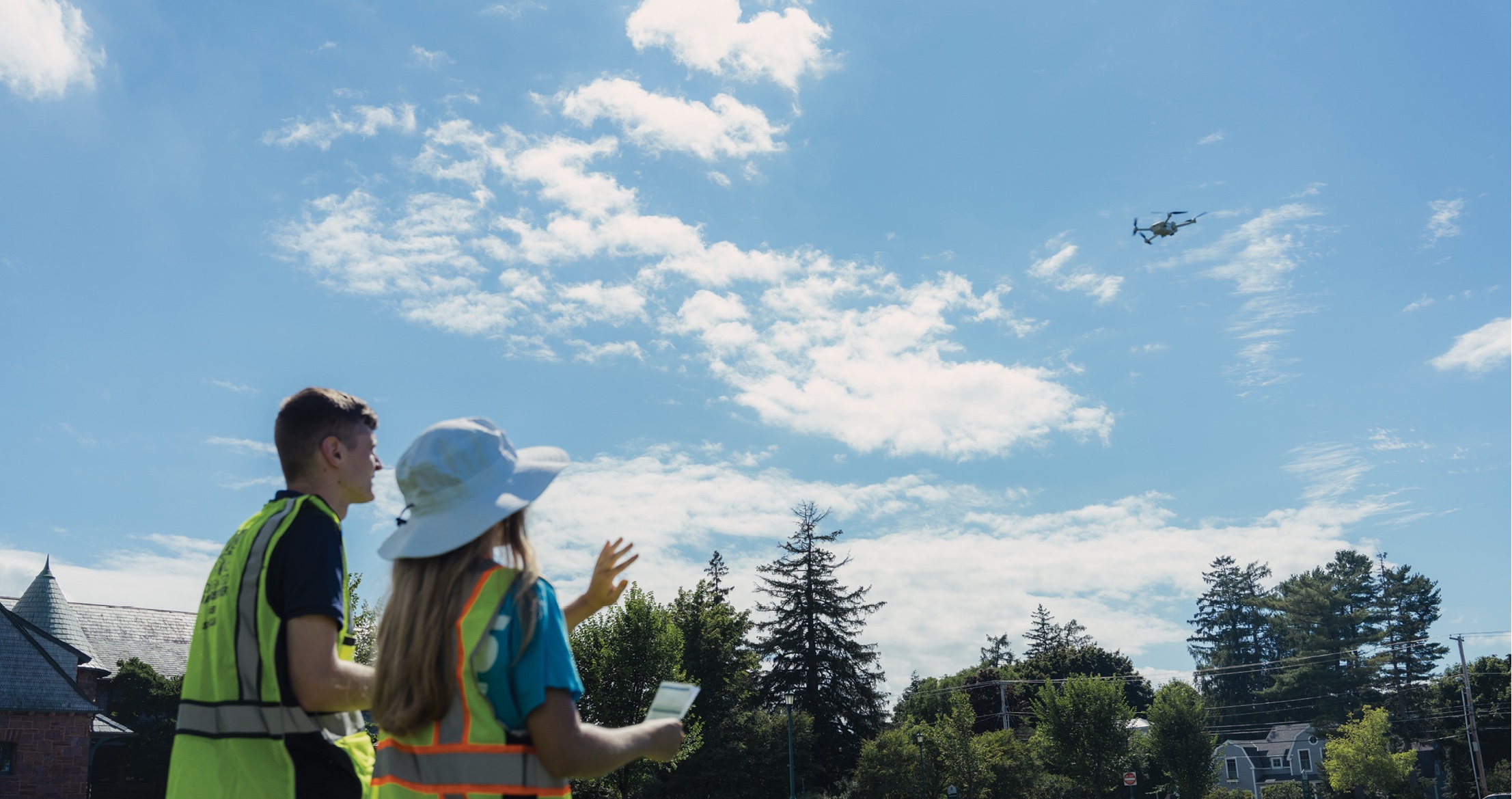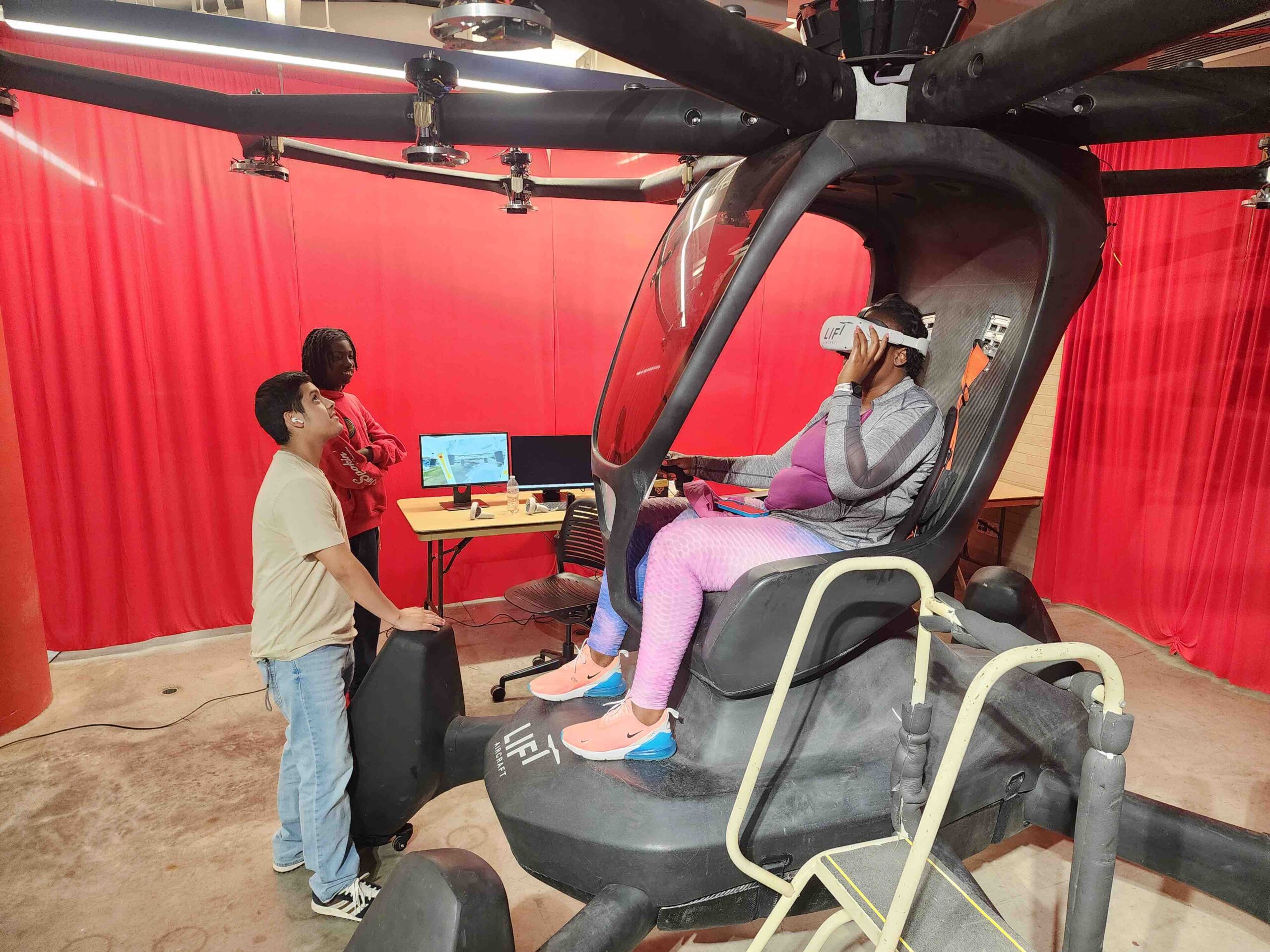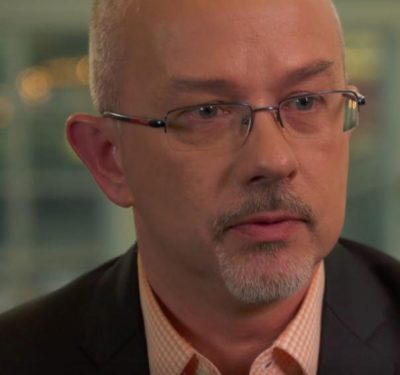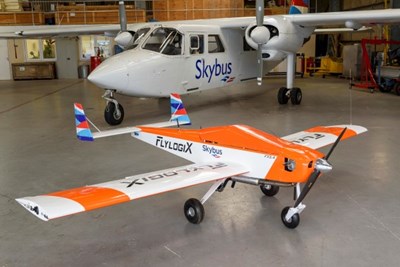ASSURE is a FAA-funded program consisting of a network of aligned university testing centers for advanced aviation safety.

At the heart of enabling uncrewed traffic management in an advanced mobility airspace is the knowledge that everyone is flying with the same set of predictable rules for equipment and aircraft behavior. That kind of predictability can only come with agreed upon standards, which, in turn, are based on extensive research, both academic and operational, and training to ensure operators comply.
While standards can be developed under many auspices, a core player is the Alliance for System Safety of UAS Through Research Excellence (ASSURE), the FAA’s testing center for UAS research.
“About 10 years ago, in 2014, Congress finally got frustrated with the FAA’s inability to move UAS fast enough because the FAA didn’t have the capacity to do research, only to establish regulations and policy,” said Stephen P. Luxion, ASSURE executive director. ASSURE was set up as a Department of Transportation (DOT) Center of Excellence, housed at Mississippi State University after a competition among schools.
Today, ASSURE is comprised of 29, soon to be 30, universities and more than 100 industry partners. “Our mission is to inform FAA leadership on rules, regulations, policy, guidelines, standards, and training requirements,” Luxion said.
ASSURE FOCUS
To this end, ASSURE focuses on UAS airworthiness and certification, detect and avoid (DAA) technologies, human factors in UAS operations, UAS traffic management (UTM) and integration with manned aircraft, and risk assessment and management for UAS operations.
As a human factors example: “In theory, there could be a quadriplegic piloting a UAS as long as their chair and support system were properly equipped,” Luxion said. “We’re trying to figure all that out.”
ASSURE’s mission leads to research in many arenas such as disaster prep, recovery, multi-aircraft control, cybersecurity, autonomy and medical requirements for operators.

THE IMPORTANCE OF STANDARDS
Standards streamline UAS operation. Without them, every flight that deviates from a narrow set of requirements must apply for and receive a waiver from the FAA. This is time consuming and cumbersome. Once a standard is developed and adopted, flights can take place as long as they adhere to the standard. That takes research and testing.
This is true in many areas, including UTM. “ASSURE has been helping to build performance standards and means of compliance for the detect and avoid portion of UTM,” Luxion said. “We also work to support NASA on three communications projects looking at UTM electromatic spectrum requirements, understanding and predicting reduced GPS locations and times, and how to mitigate their issues.”
A standard is usually the result of a long process of testing, which itself can be complicated and involve many underlying factors. Dr. Mark Askelson, associate vice president for research with a focus on national security at the University of North Dakota, has been involved with numerous ASSURE projects. In one, “we had to develop test plans for how we would actually test detect and avoid systems. And that includes things like, how do you design encounters. So, we had to fly UAS and intruder manned aircraft in proximity, and then had to do that safely. So, we had to develop safety processes for the test methodology; which meant we had to develop metrics.”
Askelson said their efforts provided the underpinning of standards development. “A lot of that work ended up supporting standards developed by the American Society for Testing and Materials (ASTM) which is a standards group,” he said. ASTM is a well-known depository for hundreds of standards in many arenas.
“If you don’t have a standard, you’re doing one-offs,” Askelson said. “With a standard, companies don’t have to do that. As long as they’re compliant with the standard they’re good to go.”
Askelson also pointed out that even when you develop a standard the industry appears to be adopting, the FAA doesn’t necessarily have to adopt it completely. “It’s such an advancement to even get something on paper and have people say it makes sense, but the FAA might give feedback and say they’re worried about a piece of it.” Nonetheless, companies often start to adhere to the standard, and list it as a marketing advantage, even while there are ongoing efforts to gain FAA approval, he said.

BUSINESS PARTNERS ADD TO SOLUTIONS
ASSURE business partners provide crucial equipment and partnership. Industry works with ASSURE on a variety of topics and for many reasons.
“We’re still at kind of a foundational point in UAS integration,” said Frank Matus, director strategy and business development at Paris and Arlington, Virginia based Thales, an ASSURE business partner, which, among other activities, works to address UAS integration with its Vantis System, and has a partnership with the state of North Dakota.
“A lot of these activities may or may not give us a specific advantage in terms of selling technology solutions, but it does allow for industry to kind of coalesce around a few interoperability topics,” Matus said. “If there’s consistency on how operators are onboarded and trained, that allows industry to design solutions to support those operators. And that’s really what we need. I think we’ve had the Wild West in the last decade or so and having some consistency where we know the rules of the game, how operators are going to use services and apply them to their specific operations is really helpful.”
Dylan Ruppel, program manager for non-visual on-site systems, Detect Inc. of Panama City, Florida, a specialized sensor manufacturer, has worked with the University of North Dakota using multiple Detect Inc. radars, and has done several case studies for BVLOS, counter UAS and safety, making use of the company’s background in avian detection and mitigation.
Aaron Pierce, CEO of Pierce Aerospace, which manufactures remote ID beacons as an aftermarket add-on, said, “We’ve been fortunate enough to work with a couple of different ASSURE projects. The first project we did with ASSURE was focused on counter UAS. Most recently, we’re working on a remote ID project. We’re deploying our remote identification and sensors to collect information broadcast from drones to help understand how remote ID is currently being utilized. We’re also working for integration into the National Airspace [NAS]. We’re partnering with Embry Riddle Aeronautical University, in Daytona Beach, Florida, which is analyzing the data we send them. We’ve also worked with the University of Alaska in Fairbanks as part of a consortium.”
Pierce said he has a personal passion about helping to build the standard for remote ID because he was previously part of a helicopter crew and had to help evacuate people off the aircraft.
THE 2024 FAA REAUTHORIZATION ACT AND ASSURE
The 2024 FAA Reauthorization Act was passed by Congress and includes several provisions that significantly expand ASSURE’s mandate and foster greater collaboration and innovation. These include:
• Increased funding and resources to allow expanded research activities, additional hiring and more advanced equipment acquisition, as well as new grant programs.
• Expanded research focus areas including counter-UAS technologies to address rogue or malicious drones; Urban Air Mobility (UAM) including the integration of electric vertical takeoff and landing (eVTOL) aircraft into urban environments; and environmental impact studies.
• Enhanced collaboration and partnerships including with international research institutions, regulatory bodies, and additional public private partnerships to share research across the globe.
• Workforce development and education including training programs and student engagement.
• Data sharing and transparency including open data initiatives and publication of performance metrics and progress.
• Policy and regulatory support including impact assessments of potential regulatory changes as well as formal recognition of ASSURE’s role as an advisory body to the FAA.
• Technological innovation including encouragement to explore integration of advanced automation and artificial intelligence in UAS operations that enhance safety and efficiency; and development of resilient navigation systems that are effective in GPS-denied environments, such as geomagnetic navigation and quantum sensors.
• Safety and risk management including in-depth studies on collision avoidance, human factors and system reliability as well as other emerging threats and vulnerabilities.
The Act supports activity such as modeling and simulation as well as technology surveys and regulatory gap analysis carried out at Embry-Riddle Aeronautical University (ERAU), and air traffic management training at ERAU and University of North Dakota undergraduate programs. It also established a credentialing authority known as ASSUREd Safe, which will provide essential services such as standards development, education, and testing tailored to equip first responders for diverse emergency response operations.
“Ultimately, the selection of which projects we work on is directed by the FAA,” Luxion said. “If the FAA isn’t responsive enough, and Congress thinks something is important, they tell the FAA what research they want done in the appropriations bill.”
THE FAA AND ASSURE—WORKING TOGETHER
As far as how ASSURE and the FAA work together, “We usually have a monthly technical interchange meeting with the FAA over how the research is going and day to day activities, and twice a year program management reviews with them,” Luxion said.
The actual research is done at the universities with industry and even some government partners, Luxion explained. “We build ad hoc teams made up of institutions with different expertise to do multidisciplinary research. Industry partners are usually trying to get something done to be able to operate in the airspace. They’re participants but they don’t lead the research.”
Currently, he said, they’re on their 84th project.

A FEW CURRENT PROJECTS
At any given time, ASSURE projects cover a wide variety of research topics. A sample of ongoing projects includes:
• A safety risk management analysis on sUAS detect and avoid systems. This research will develop analysis tools and methods of risk assessment for small remotely piloted DAA systems. The research team will identify disconnects between existing risk assessment methods, methodologies and their application to DAA, as well as identify hazards and new risk assessment strategies. Eventually, this research will lead to toolsets and methods for assessing risk for DAA while identifying contributors to risk and strategies for mitigation.
THE TEAM: Drexel University, Embry-Riddle Aeronautical University, Kansas State University and the University of North Dakota.
• A distance threshold investigation of DAA proposed separation criteria between sUAS and manned aircraft. While these thresholds are often supported by unmitigated simulation analysis, they have yet to be assessed holistically for compliance with regulatory right-of-way rules, human factors engineering, remote pilot usability, DAA surveillance limitations and more. The project will assess, refine and validate clear separation criteria for a variety of small UAS operations that avoid crewed air traffic as well as separation criteria between two sUAS.
THE TEAM: Kansas State University, Mississippi State University, the National Institute for Aviation Research (NIAR) at Wichita State University and the University of North Dakota.
• A research effort to inspire the next generation toward STEM and aviation careers through oureach approaches that use UAS as the central learning platform.
THE TEAM: North Carolina State University, Oregon State University and Virginia Tech.
• A project to apply prior ASSURE research to evaluate UAS safety and security technologies in the NAS to include airborne avionics, communications, navigation and surveillance (CNS) systems, air traffic management systems and other ground-based infrastructure such as lighting; as well as evaluating systems for differentiating between manned aircraft, authorized and unauthorized UAS.
THE TEAM: Mississippi State University, New Mexico State, the University of Alabama in Huntsville, the University of Alaska in Fairbanks and the University of North Dakota.
• A project to identify flight recorder requirements for UAS integration into the NAS. The research will perform a risk assessment and explore flight recorder requirements for a variety of small, medium and large UAS and remotely piloted urban air mobility (UAM) aircraft. Research will include potential unique flight data recorders and cockpit voice recorders and crash testing of data recorders for small and medium sized UAS.
THE TEAM: Embry-Riddle Aeronautical University, Wichita State University and the University of North Dakota.
FUNDING
As far as funding, “the money flows directly from the FAA to our core universities and can flow to affiliate universities and industry partners,” Luxion said. “I have about 10 employees that work for me at Mississippi State. But our funding here is self-funded from the money we raise from our research. One of my frustrations is I’m under the university system for payroll. So, I have to justify my salary in terms of university categories.”
ASSURE AND BEYOND
ASSURE is sometimes spoken of with BEYOND, another FAA program with focus on integrating UAS into the national airspace.
BEYOND focuses on operational aspects of the UAS universe, especially enabling and scaling BVLOS issues and addressing community concerns. It involves partnerships between the FAA, local governments, academia and industry, and focuses on practical demonstrations and data collection. It looks to provide actionable data and insights to inform future regulations and operations.
ASSURE, on the other hand, is focused on developing knowledge, technologies and standards through research.
“The biggest difference,” Luxion said, “is BEYOND tends to work on smaller programs and problems that are important locally, but don’t necessarily relate to any standing policy rule. ASSURE does research to actually get a standard for the U.S. and, increasingly, around the globe. We do all the research, not just testing, but also the modeling simulations that sometimes include testing, and we develop reports and recommendations and identify the gaps. We do the research to support where the gap is and then provide the FAA our best guidance to establish the standard.”
ASSURE TEAMS
ASSURE projects involve teams from several schools as well as business partners and experts. “We have technical leads and if it’s a huge project technical leads in different areas. Mississippi State has a program management team that works for me and keeps up on all the research”, Luxion said. “The FAA has a program management team that we work with as well, and inside the FAA, there is usually a sponsor that needs to move the regulation along. Sometimes there is a subject matter expert involved. If not, then we or industry provides it so we can keep things on track.”
“It’s all applied research though, not developmental, which supports rules, regulations and policy,” he said.
STARTING EARLY
ASSURE takes its education role seriously. At Sinclair College in Dayton, Ohio, future UAS researchers and operators get a taste of the field through an FAA supported program providing UAS and advanced air mobility (AAM) outreach to elementary, middle and high school students and teachers. The program includes hands-on experiences with simulators; and introductions to traffic management, safety, careers and applications. “We’ve reached literally thousands of students,” said Andrew Shepherd, chief research officer at the school.






